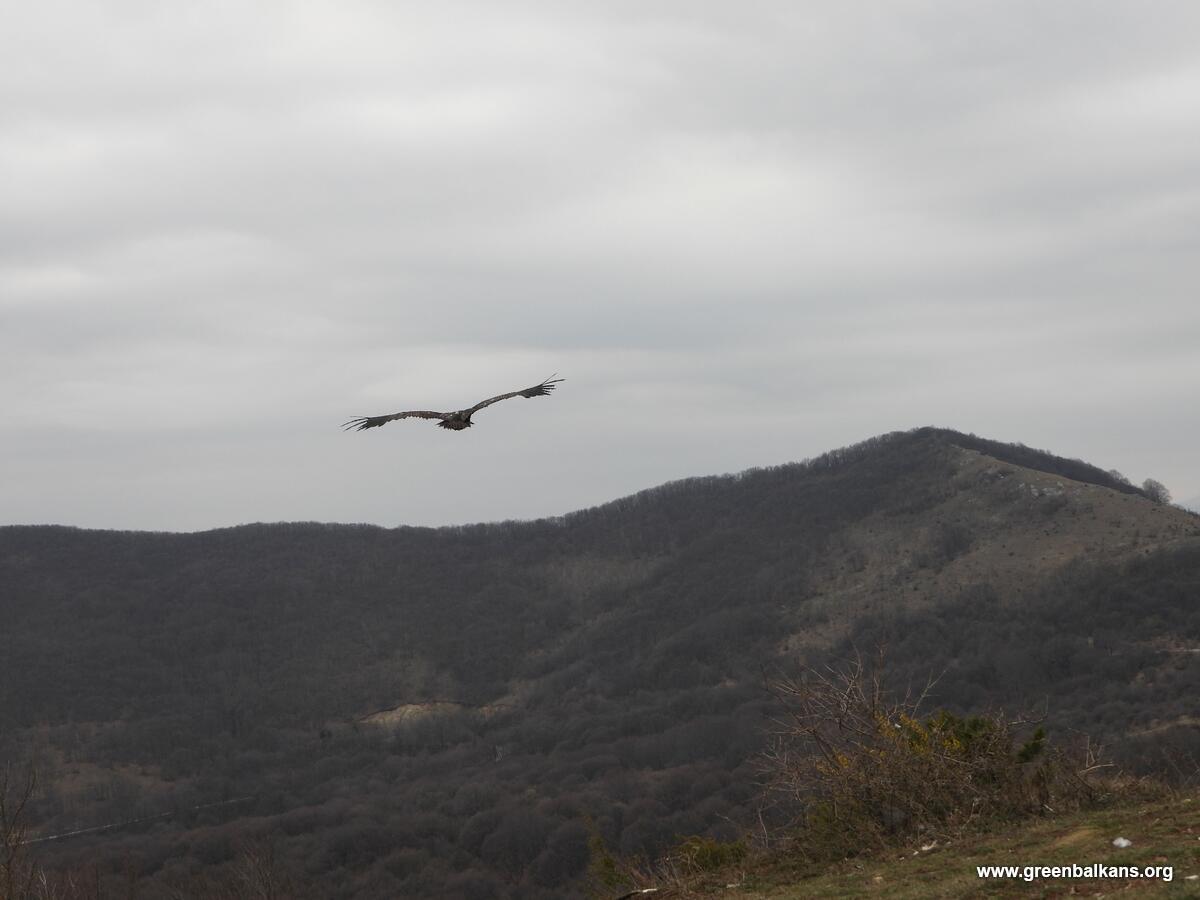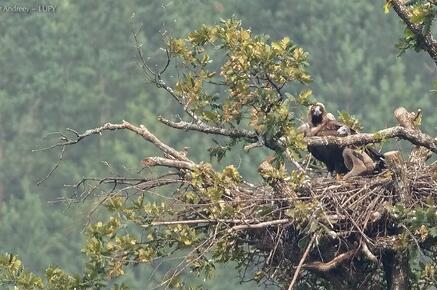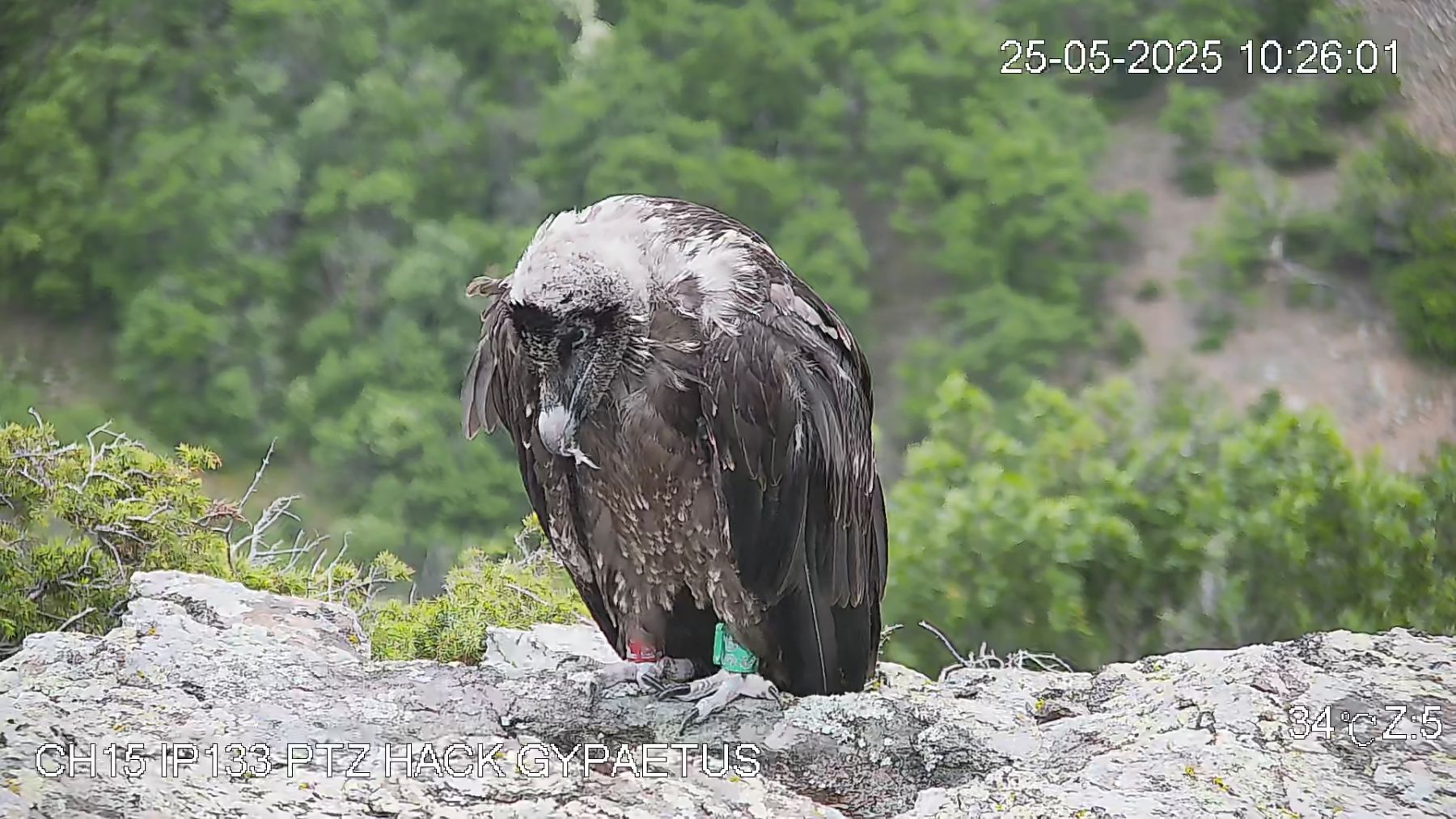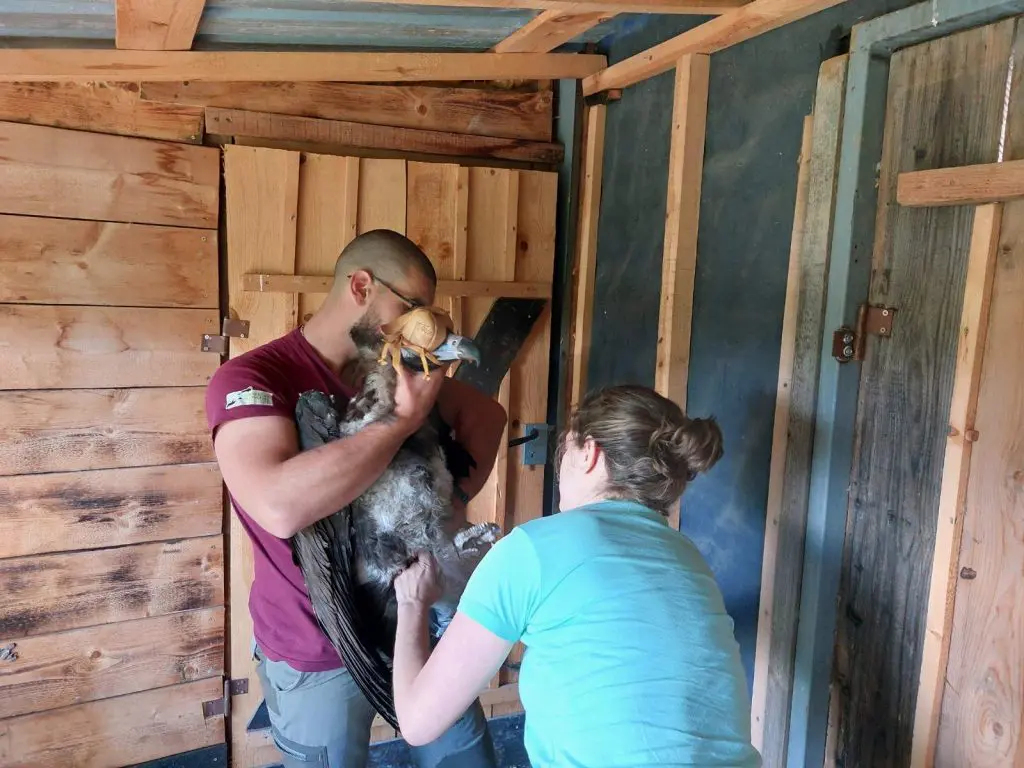Nine Cinereous Vultures (Aegypius monachus) were transported to Kresna Gorge in Bulgaria in March 2024. After a few months of acclimatization in the aviary, four of them were successfully released in the wild in Kresna.

This was a long-hoped-for and the first release within the “Bearded Vulture LIFE” project, that aims to bring back the Bearded Vulture in Bulgaria and strengthen the existing Cinereous Vulture population by various activities such as improving nesting conditions and food base, mitigating threats and reintroducing and monitoring of both species.
The release of Cinereous Vultures in the Kresna Gorge was already planned as part of the “Vultures back to LIFE” project in 2018, but after the tragic poisoning of part of the Griffon Vulture colony there, plans were changed. Finally, after a long wait, the conditions came together for the release to take place.
Rescued in Spain and starting a new life in Bulgaria
The nine vultures were generously donated by the regional governments of Extremadura and Andalusia in Spain. In recent years, the Junta de Extremadura has donated over 70 rescued Cinereous Vultures to the successful Vultures Back to LIFE project to reintroduce the species to Bulgaria and additional birds followed by the recently started “Life for the Bearded Vulture” project.
Every year, several Cinereous Vultures that hatch in the wild in Extremadura, Spain, suffer from malnutrition, weakness or injuries. Rescue missions provide a lifeline for these young and inexperienced vultures. Wildlife rehabilitation centres like Los Hornos in Extremadura, receive these wild birds in the hope to nurse them back to health for their eventual return to the wild. As these young vultures recuperate, a broader vision begins to take shape. Some of these birds are not just destined for a return to the Spanish skies; they are chosen for a greater purpose – contributing to the conservation of the Cinereous Vulture beyond Spain’s border, where the species need support.
Once the birds are selected for donation, they are received by the Spanish rehabilitation centre AMUS, who prepare them for their transport with the supportof our experts at the Vulture Conservation Foundation (VCF). Each vulture is treated until fully rehabilitated, spends the required quarantine period and undergoes health examinations to be considered ready for their long journey that waits them.
After several months of efforts and preparations, nine Cinereous Vultures were finally ready for their transport. Staff performed the last checks on the vultures and carefully placed them in the specialist animal transportation vehicle. The vultures then left Spain, beginning their journey to Bulgaria, their new home.
After the arrival in Bulgaria, our local partners from the Green Balkans and Fund for Wild Flora and Fauna checked the state of the birds to make sure they are healthy, equipped them with unique identification rings and collected blood samples. The project team then proceeded to release them in an acclimatization aviary where eight of the birds stayed to adjust in their new environment in Kresna.
One female was transported to Kotel mountain and released there due to a shortage of female Cinereous vultures in the newly established colony in the Eastern Balkan Mountain.


Releases in Kresna Gorge
After the vultures were adjusted to their new environment, In May 2024, four of the nine vultures were released into the wild. Two of these have since established themselves in the Kresna Gorge, forming a core group that is expected to attract and establish more vultures in the area. The other two, however, did not choose to stay for long in the area: one vulture flew north to near Kaliningrad, and other “followed his heart” towards the Vrachanska Mountain.

An unexpected ‘love story’
What happened at Vrachanska Mountain was a surprise for everyone: A male that was released in Kresna Gorge and the female released two months earlier in Kotel Mountain were reunited again in this new territory!
To everyone’s astonishment, the bond between the two rescued birds from Spain seemed to be unbreakable. Even though released in different locations, almost 500 kilometres apart, they both embarked on a long journey, left their respective release sites behind and eventually met again. Was this driven by their instinctive force to find each other again?
Now, in the Vrachanska Mountain, even though they are still quite young, they behave as a pair in a thriving breeding colony. We will follow with excitement and hope these birds continue their ‘love story’ until the time comes for them to create their own family.

The broader impact – Strengthening the Cinereous Vulture population and preparing the way for the Bearded Vultures to arrive
The reintroduction of the Cinereous vulture is a dream come true for Bulgarian wildlife enthusiasts. The species’ return as a breeding population in Bulgaria, 28 years after it was declared extinct, is a testament to the dedication and cooperation of international conservation efforts.
The blooming Cinereous Vulture populations are also great news for the Bearded Vultures: In regions where other vulture species are thriving, it’s more likely also for the Bearded Vultures to have a successful reintroduction. The conditions to survive are the same to a large extent, and therefore strengthening existing populations and mitigating the threats is an important first step of the project before introducing the Bearded Vulture into a new country.
Future looks bright for Cinereous Vulture in Bulgaria
The Cinereous Vulture’s recent return as a breeding species in Bulgaria is only possible thanks to Spain’s support, which has the world’s largest population of this species. Home to around 2,500 breeding pairs, with more than half of them in Extremadura, Spain generously donates certain birds to reintroduction projects in Europe, including Bulgaria.
Thanks to these releases and other targeted conservation actions, the Cinereous Vulture returned as a breeding species in Bulgaria in 2021, when a reintroduced pair fledged the first chick in the Balkan Mountains, making Bulgaria the second country in the Balkans after Greece, where the species is breeding. Since then, breeding activities have steadily improved each year. This breeding season, 11 Cinereous Vulture pairs engaged in breeding, with six pairs successfully completing incubation and hatching their young – achieving a breeding record in the country. This resulted in three chicks in Eastern Stara Planina and three in the Vratsa Balkan and Ponor. The project team is now eagerly awaiting their first flights and wishes them a long life in the wild!
The Bearded Vulture LIFE Project

The “Bearded Vulture LIFE” project is a comprehensive initiative, aiming to restore the Bearded Vulture and Cinereous Vulture across Bulgaria and the Balkans. With a budget of €5.17 million, co-funded by the European Union’s LIFE Programme, the project commenced in August 2023 and is expected to continue until 2030. Building upon the achievements of its predecessor, “Vultures Back to Life,” it is coordinated by Green Balkans, with five more partner organizations within Bulgaria, including the Fund for Wild Flora and Fauna, Foundation EkoObshtnost, EVN – Elektropradelenie Yug EAD, Severozapadno Darzhavno Predpriyatie – Vratsa, and “Sinite kamani” Nature Park Directorate. Furthermore, the project benefits from international collaboration, including the Vulture Conservation Foundation (VCF), responsible for the translocation and safeguarding of captive-bred birds secured for release. Additionally, the partner Milvus group is responsible for executing conservation efforts in Romania.






